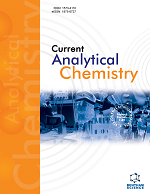
Full text loading...

This study aimed to explore the prognostic role of lipid homeostasis in Ovarian Cancer (OV). OV is a lethal female malignancy that is difficult to be diagnosed at an early stage. Emerging evidence suggests that lipid homeostasis dysregulation contributes to tumorigenesis and progression, yet its prognostic implications in OV remain unclear.
RNA-seq data and scRNA-seq data of OV were collected from public databases. The MSigDB database provided the Lipid Homeostasis-related Gene (LHSRGs) set. The OV samples were clustered using the “ConsensusClusterPlus” package, followed by identifying Differentially Expressed Genes (DEGs) between the molecular subtypes using “limma” package. Subsequently, prognostic genes were selected through univariate Cox and LASSO Cox regression analyses, and multivariate stepwise regression analysis was used to construct a risk model. The CIBERSORT, single sample GSEA (ssGSEA), and MCP-counter methods were used to assess the relation between the RiskScore and immune cell infiltration. The expression of the identified key prognostic genes in different OV cell types was analyzed by performing single-cell analysis on OV samples using the Seurat package. Finally, functional experiments, including qPCR, CCK-8, wound healing, and transwell assays, were carried out for validating the key gene expression, cell viability, migration, and invasion.
We first screened 14 prognostic LHSRGs and stratified OV into two molecular subtypes (C1 and C2). Using the DEGs in C1 and C2, 9 prognostically critical genes (ARRDC2, CCDC80, VSIG4, PI3, ATP1A3, MRAP2, GMPR, CD3D, and GBP5) were screened to develop a risk model with a strong predictive performance for OV. Notably, high-risk patients showed poor outcomes. RiskScore was significantly negatively correlated with the infiltration of multiple immune cells (e.g., cancer-associated fibroblasts, activated CD4 and CD8 T cells, etc.). Single-cell analysis revealed that the proportion of T cell types in OV samples was increased and that fibroblasts, epithelial cells, and macrophages may regulate lipid homeostasis. In vitro assays demonstrated that knocking down the model gene ARRDC2 affected the viability, migration, and invasion of the OV cells.
In the present study, a RiskScore model incorporating a 9-gene signature was proposed to stratify OV patients into high/low-risk categories, and patients with different risk types displayed the disparity in the distribution of clinicopathological features and the clinical outcome, which provided a reference for the personalized therapy in OV.
In summary, we established a novel 9-LHSRG signature for OV prognosis and characterized the immune infiltration landscape in OV. These findings contributed to more effective risk stratification for OV patients, improving the diagnostic accuracy and the personalized treatment of OV.